Need a clever gift idea you can make during the summer when you're blueberries and basil are in full abundance? This Blueberry Basil Vinegar is easy to make, has amazing flavor, and makes a wonderful gift!
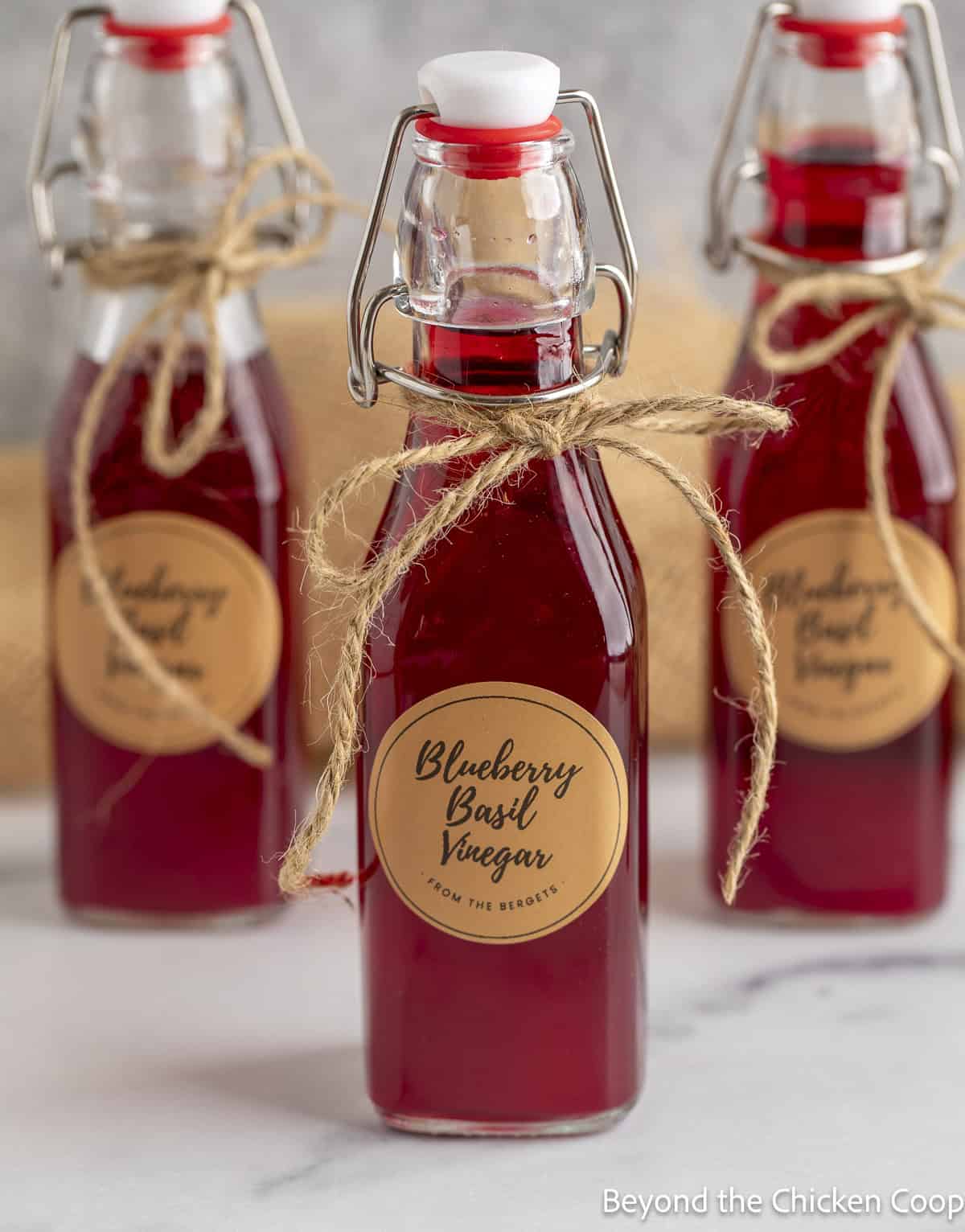
Flavored vinegar
This year I have more blueberries and basil than I know what to do with. I've baked up all the blueberry treats, including blueberry coffee cake, banana blueberry muffins, and blueberry crisp.
And I've made plenty of yummy recipes using my fresh basil - pesto, tomato basil pasta, and basil mayonnaise.
But I never thought about combining the two until I was reading through the Ball Complete Book of Home Preserving and I came across a recipe for blueberry basil vinegar. That was my inspiration for making this recipe!
Ingredients needed
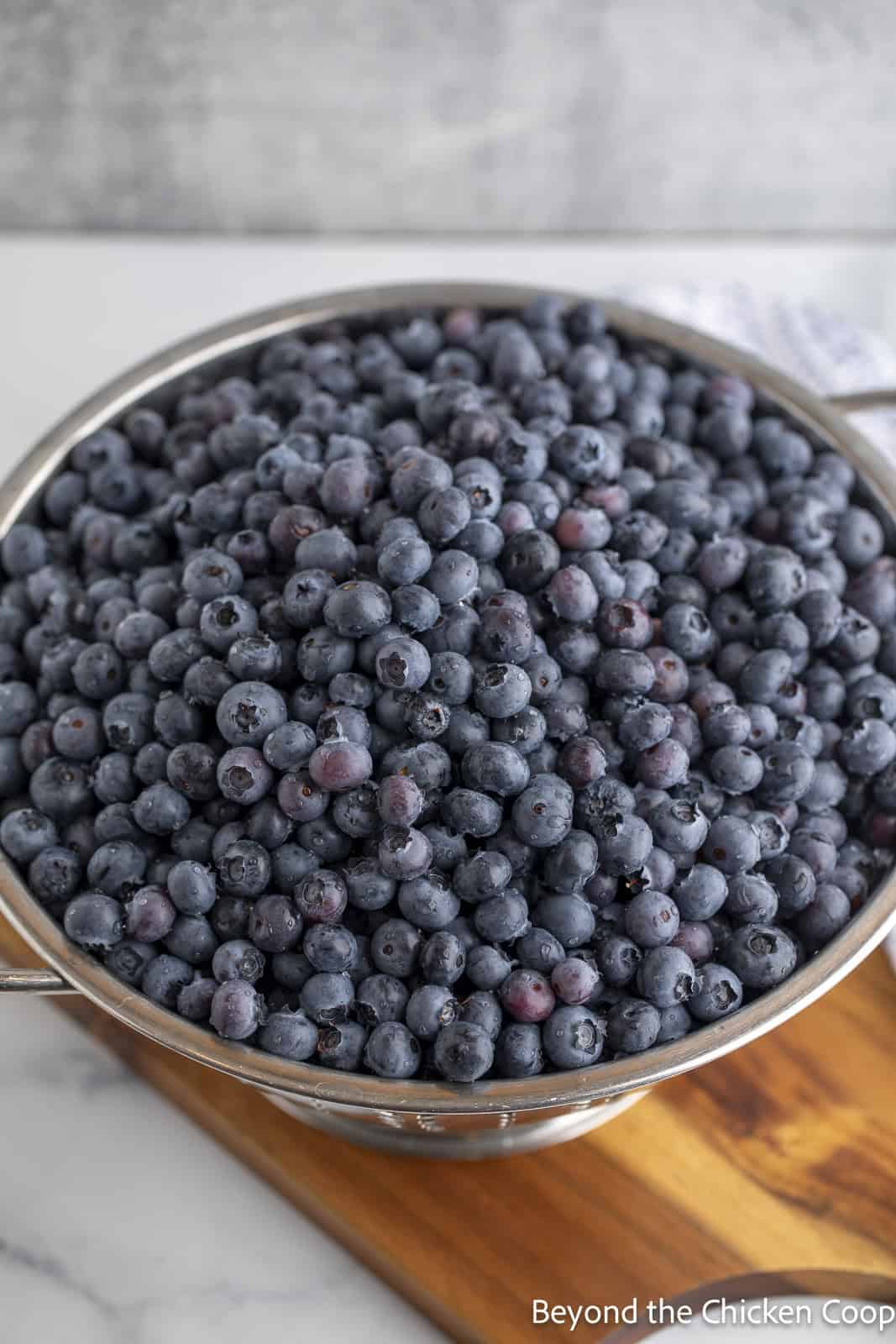
- Blueberries - Use fresh, ripe blueberries.
- Basil - Pick fresh basil leaves. Any type of basil will work for this vinegar.
- Vinegar - Use white wine vinegar or rice vinegar. Regular white distilled vinegar is too strong tasting and will mask the flavors from the blueberries and the basil.
Making blueberry basil vinegar
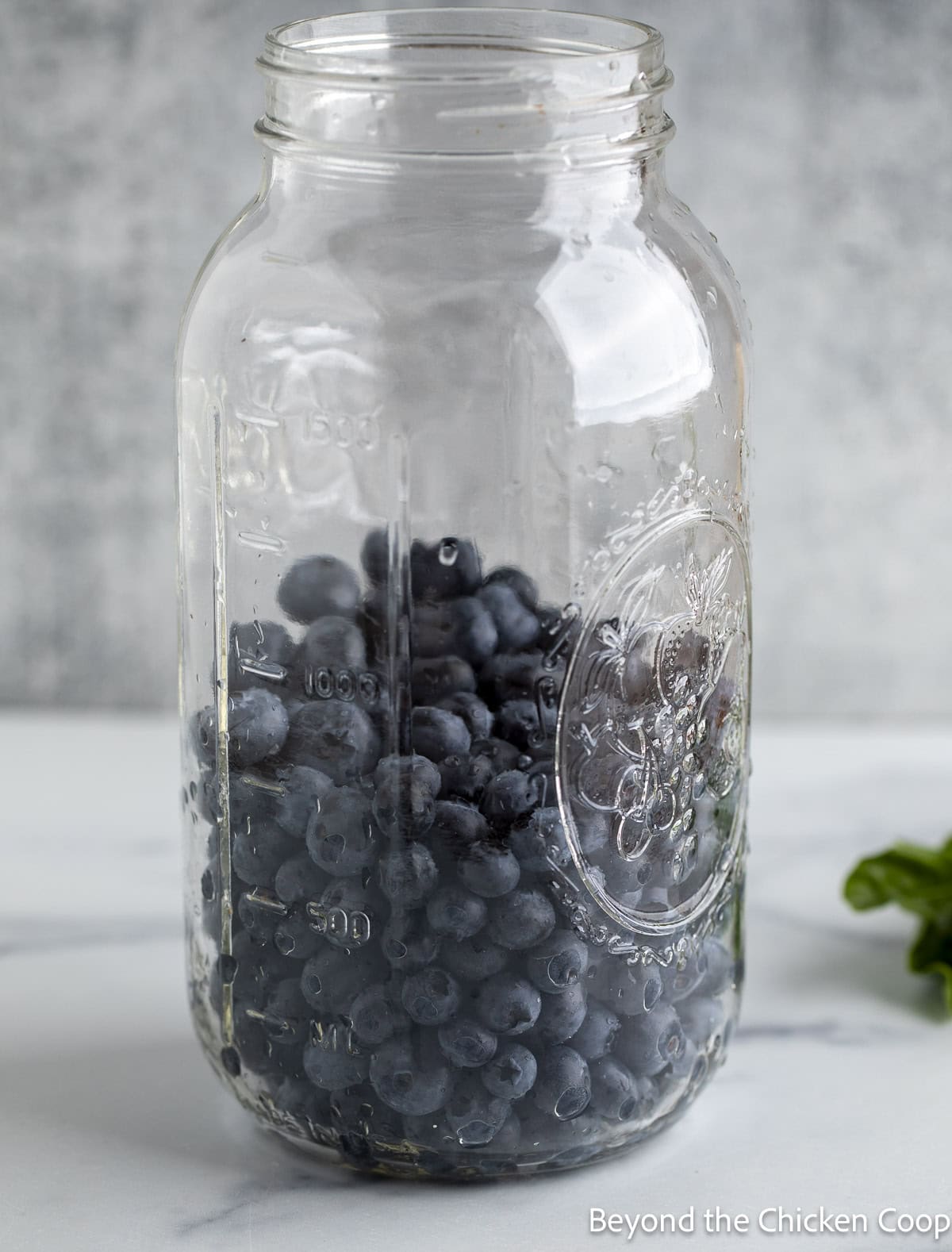
- Place blueberries in a large jar. I used a 64 ounce canning jars. This are large quart and a half sized jars. I don't use them for canning, but they are great for food storage, making vinegar or peach cordial.
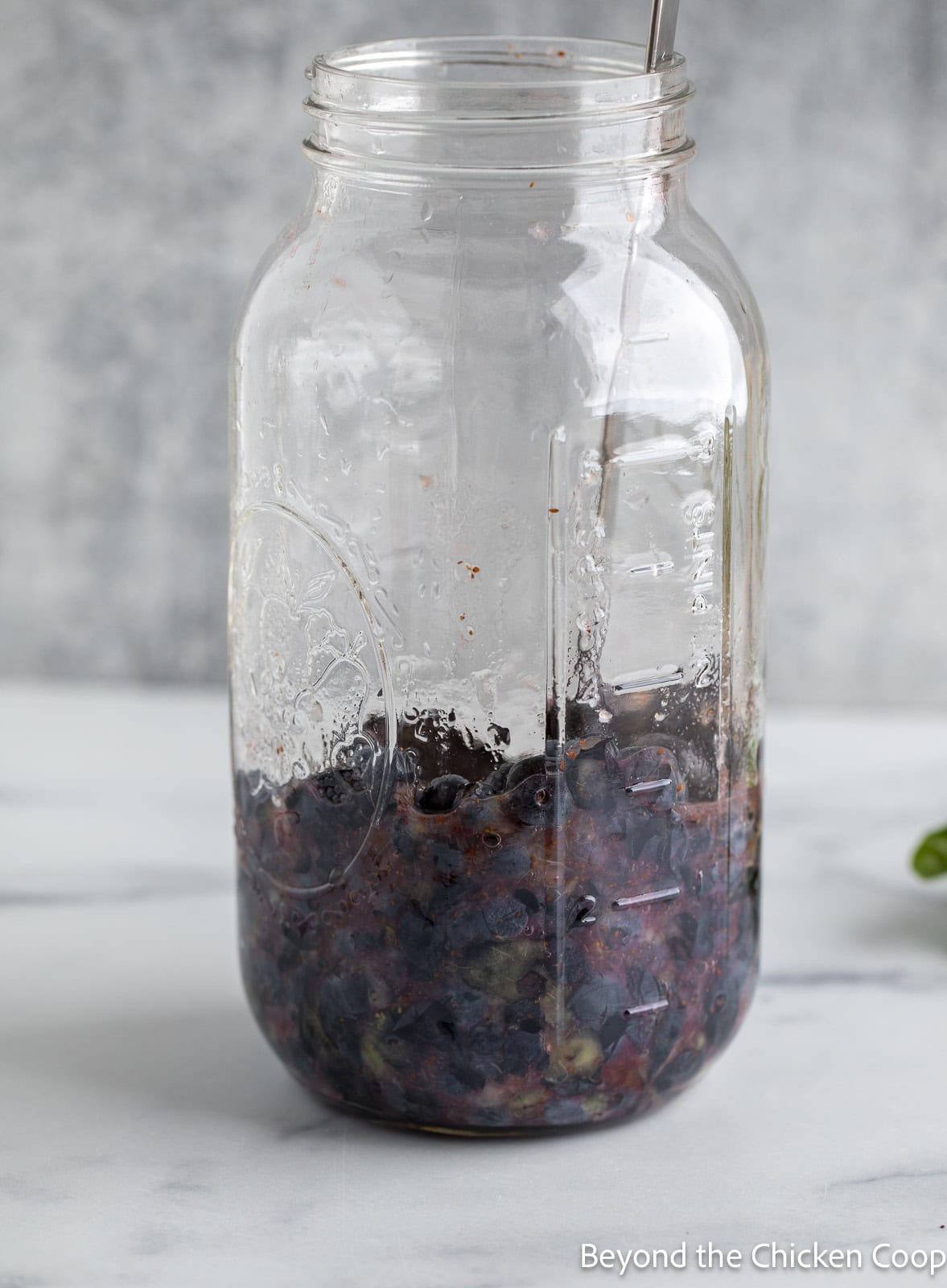
- Smash the blueberries. This can be done inside the jar with a long skinny flat ladle, or you can smash the berries outside of the jar and then place the berries in the jar. It's okay to have some unsmashed berries.
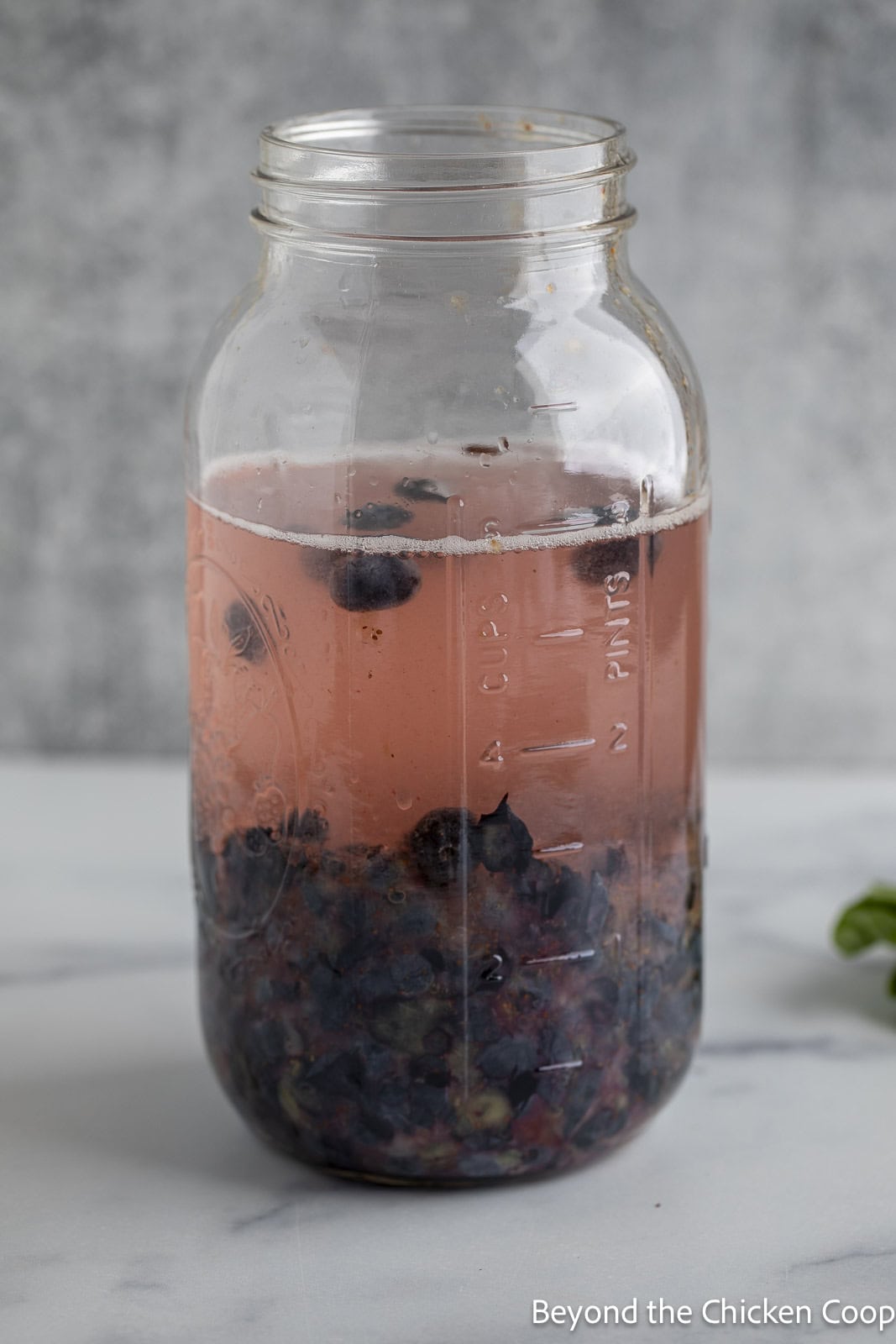
- Add vinegar.
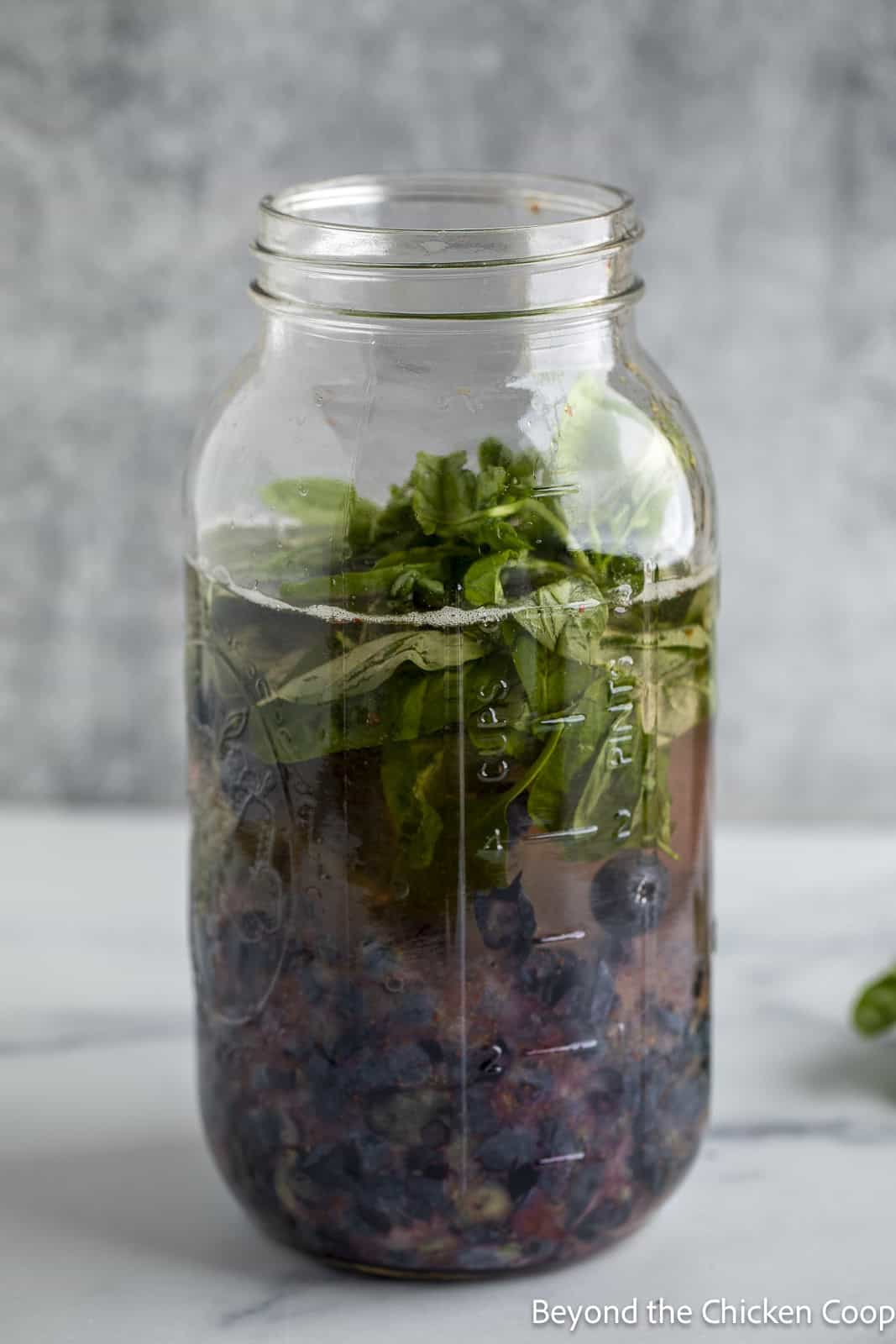
- Stack basil leaves together. Roll up and squeeze with your hands. This bruises the leaves, releasing the oils.
- Place leaves in the jar.
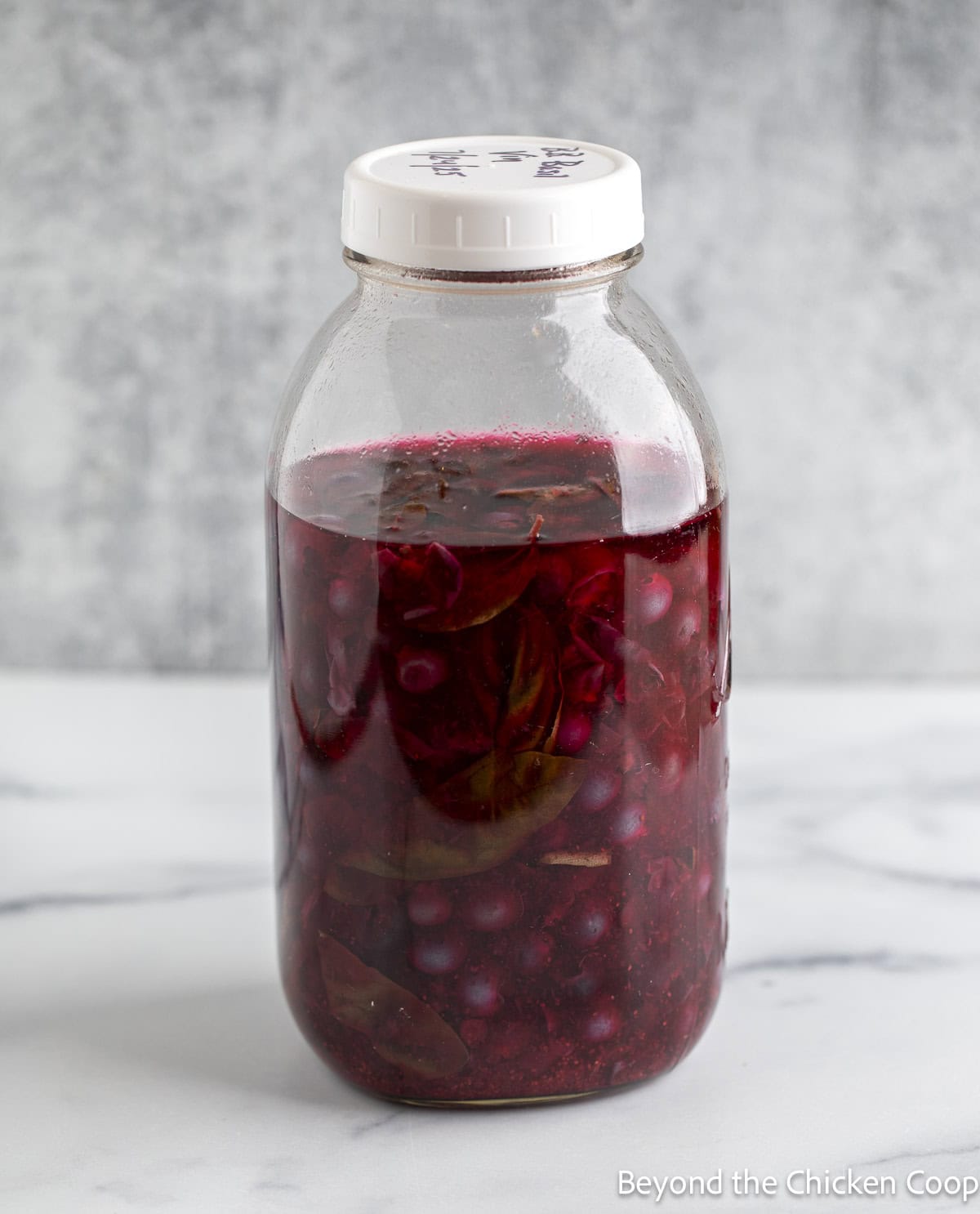
- Top jar with a lid and give the jar a good shack.
- Store in a dark, cool place for 3-4 weeks. Shake the jar at least once a week.
- After 2 weeks, taste the vinegar. You want the flavors of the blueberries and the basil to be prominent. Once the vinegar has the flavors you like, you can strain the vinegar.
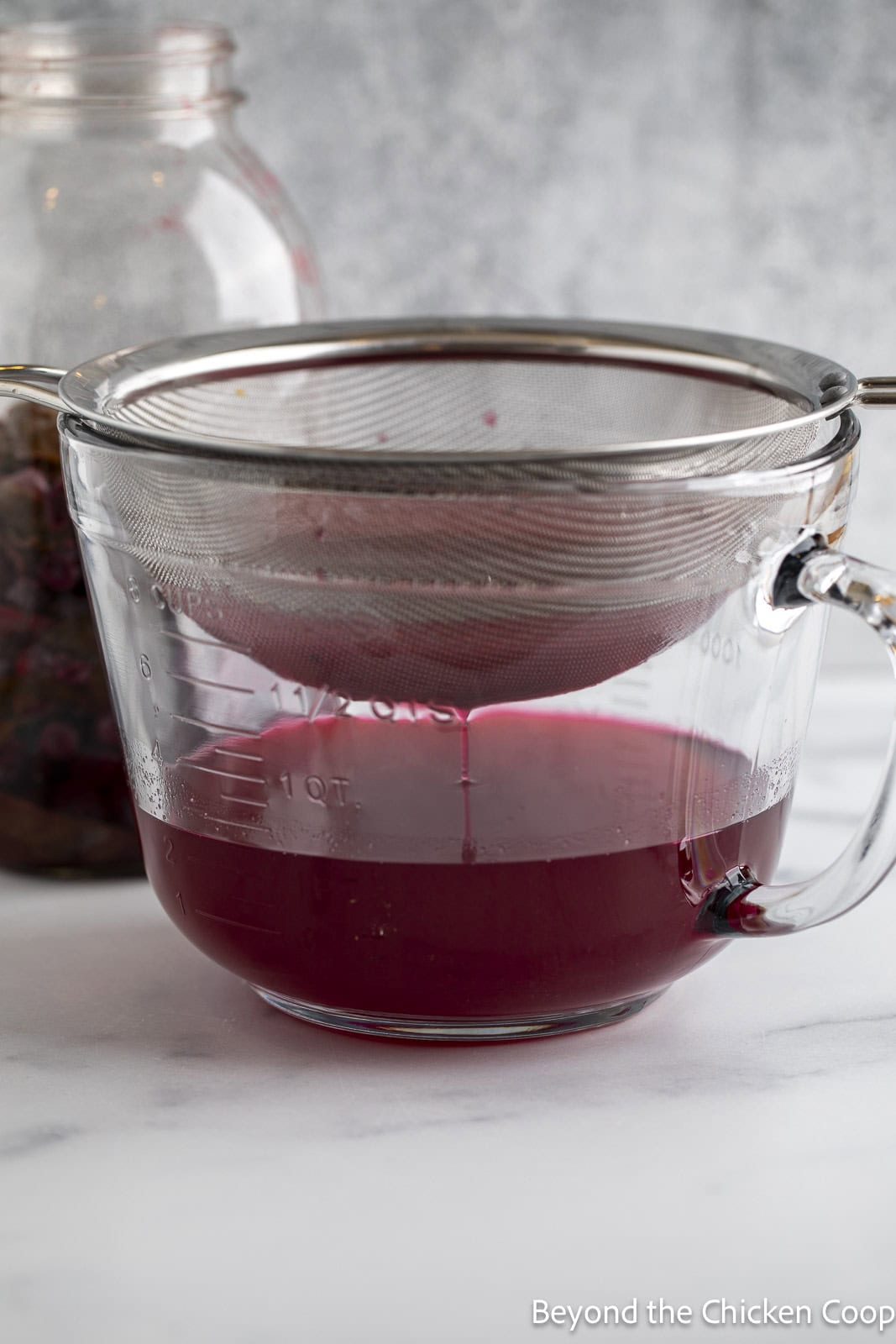
- Pour contents into a fine mesh sieve and allow the liquid to drain through. Do not mash the berries or push down on the liquid. This will create a cloudy vinegar.
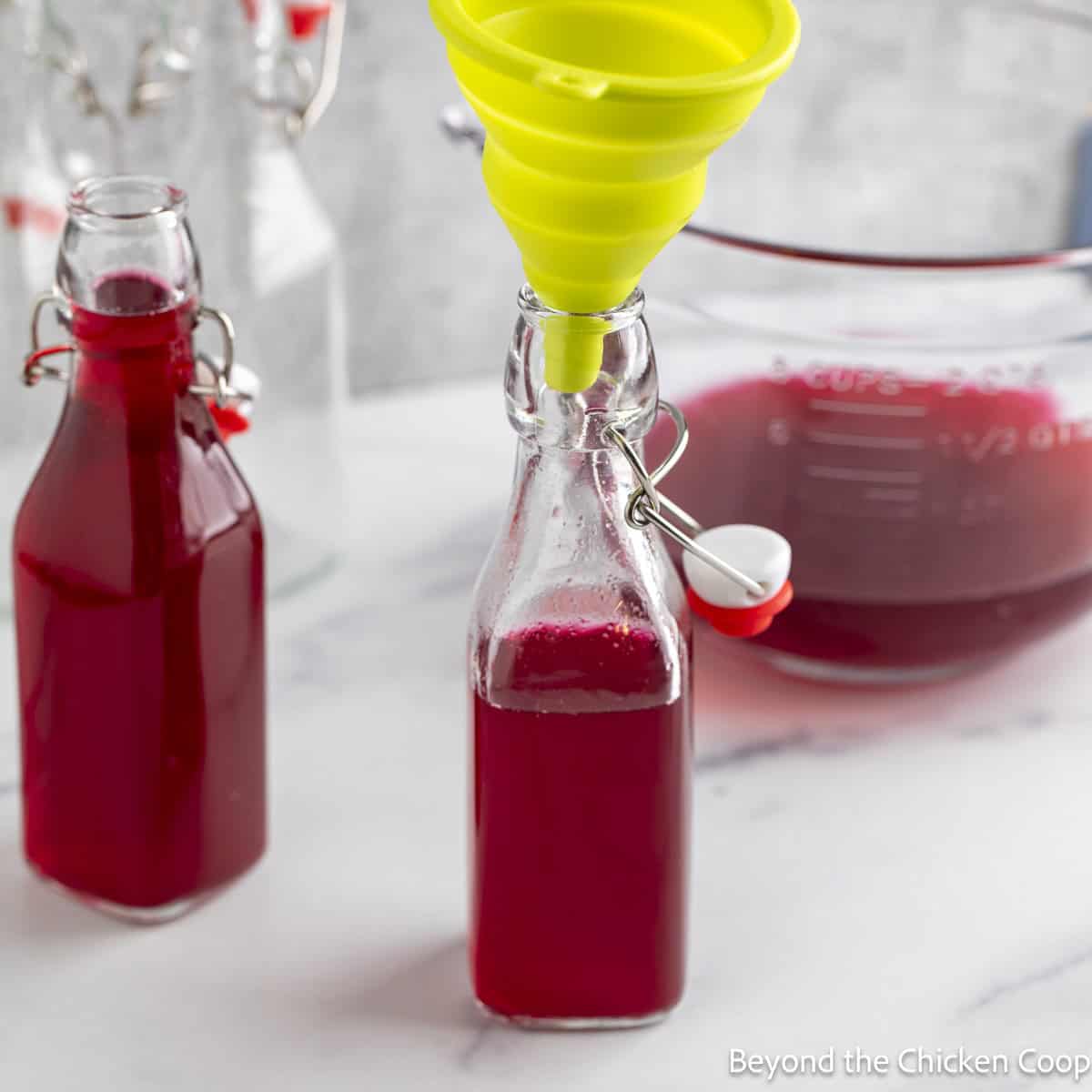
- Pour strained vinegar into jars.
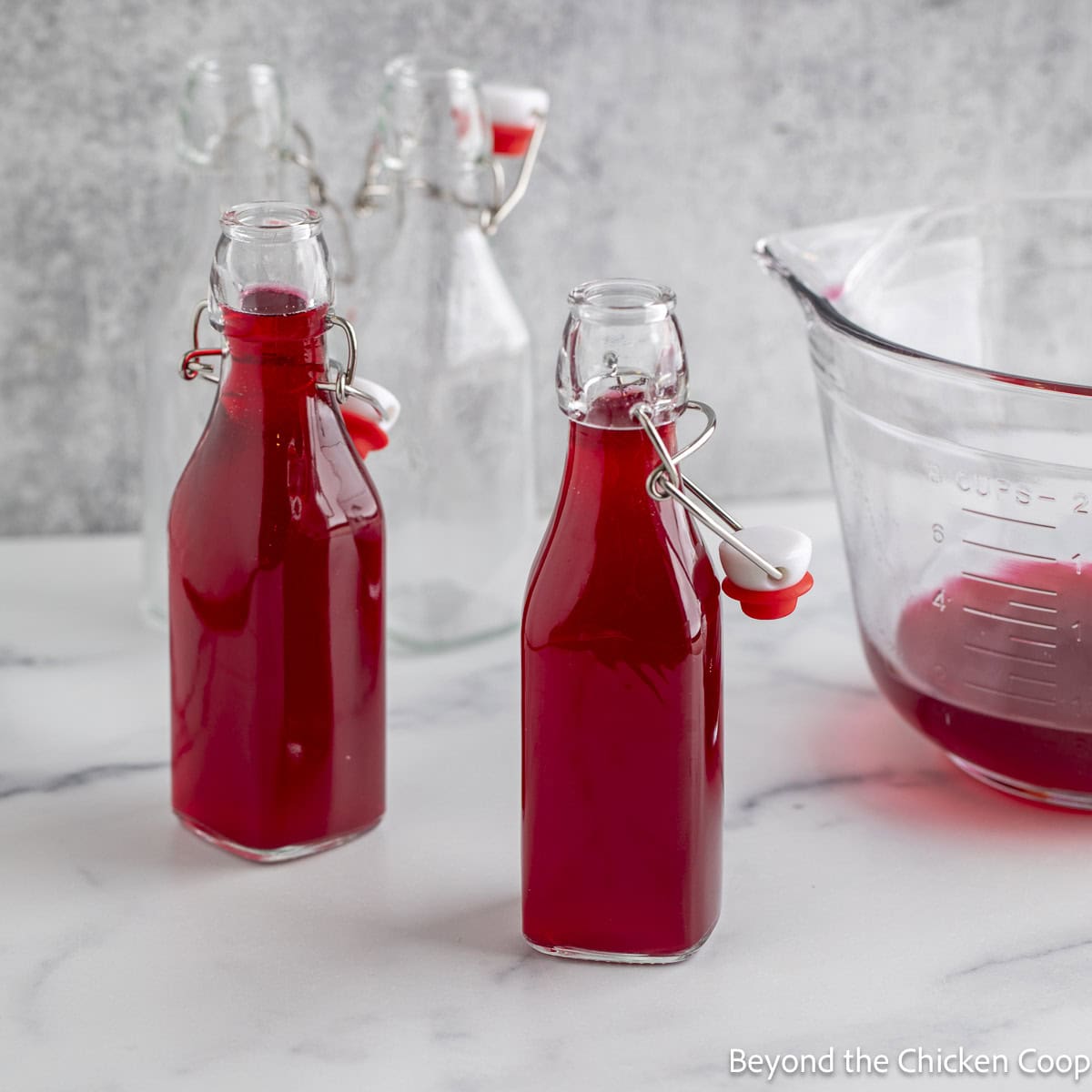
- Add lid and decorative label.
Recipe tips
- Use high-quality blueberries, basil, and vinegar. Avoid using old, moldy or mushy berries. Use new, unopened bottles of vinegar.
- Clean and sterilize your jars. Jars can be sterilized in boiling water or in a dishwasher with a sterilize cycle.
Safety concerns
Before using your vinegar, look at the bottle. If it has any mold or shows signs of
fermentation, such as bubbling, cloudiness, or sliminess, discard the product and do not use any of it that is left.
Frequently asked questions
The vinegar will keep longer when refrigerated. It will keep from 6-12 months.
The vinegar may begin to discolor or darken over time. This is okay. If any mold or bubbles develop, discard the vinegar.
Ways to use flavored vinegars
- Use in your favorite salad dressing.
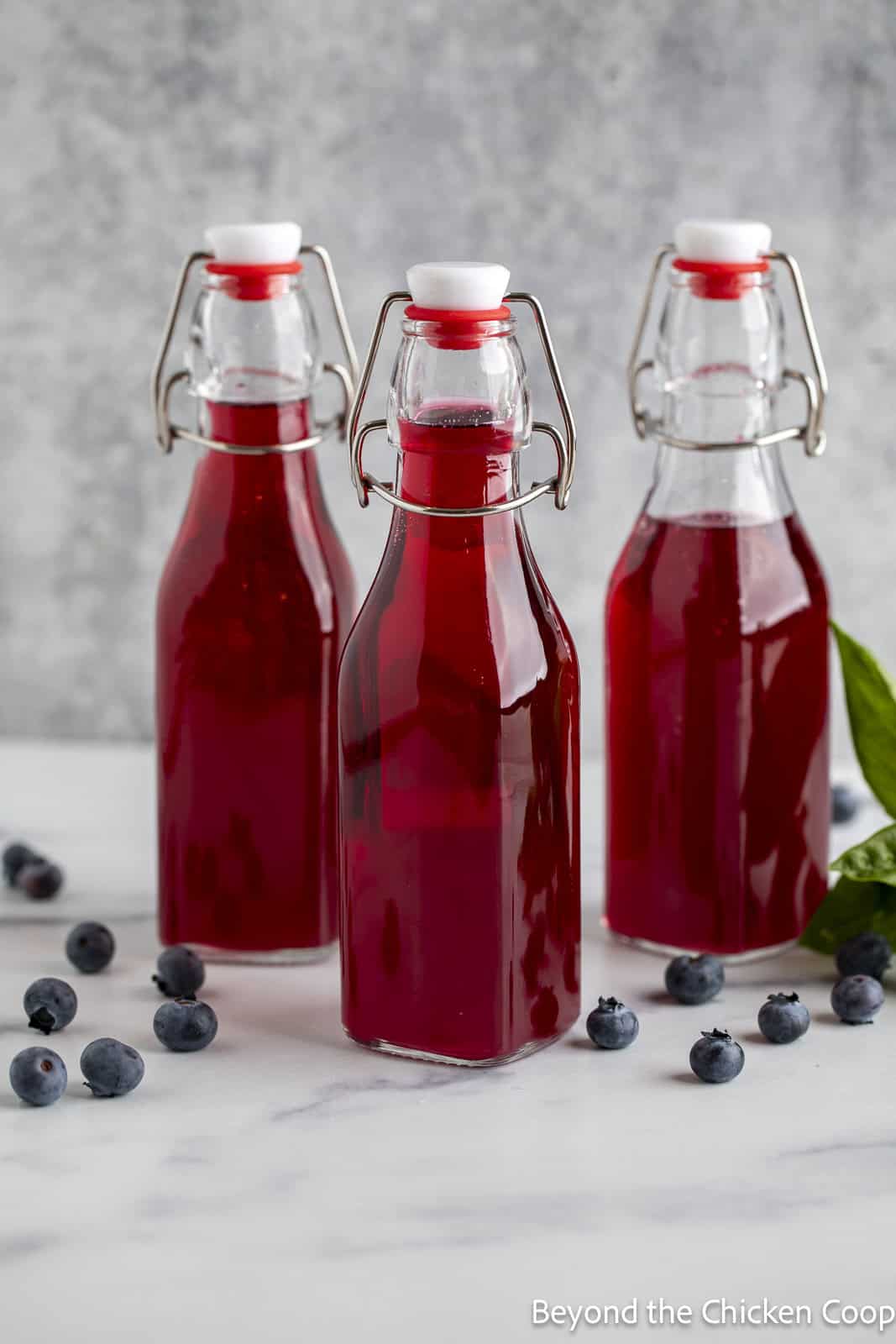
If you make this recipe, I’d love to hear about it! Leave a comment below and snap a picture and tag me on Instagram @beyondthechickencoop
Check out all my delicious condiment recipes.
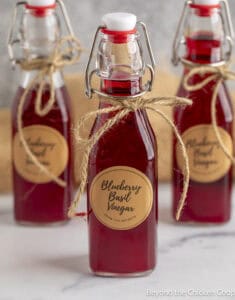
Blueberry Basil Vinegar
Equipment
- 64 ounce jar (or other large glass jar)
Ingredients
- 4 cups blueberries
- 3 15 ounce bottles white wine vinegar (or rice vinegar)
- 1 handful fresh basil
Instructions
- Smash blueberries and place in a large glass jar. You can also smash the blueberries after you add them to the jar.
- Add vinegar.
- Stack basil leaves, then roll together lengthwise. Crush lightly in your hand, then add to the jar. Place a lid on the jar then shake it well. Store in a dark cool place for 3-4 weeks. Shake jar at least once per week.
- After 2 weeks, you can begin tasting the vinegar. Once it reaches your taste preference, the vinegar is done and can be strained.
- Strain vinegar into a fine sieve. Do not push down on berries or mixture or the vinegar will become cloudy.
- Place strained vinegar in clean, sterilized jars. Store in a dark cool place or in the refrigerator.
Notes
fermentation, such as bubbling, cloudiness, or sliminess, discard the product and do not use any of it that is left.
Nutritional Disclaimer:
Nutritional information is provided as a courtesy and should only be construed as an estimate rather than a guarantee. To obtain the most precise nutritional information in a provided recipe, you should calculate the nutritional information with the exact ingredients you are using when preparing the recipe using your preferred nutrition calculator.



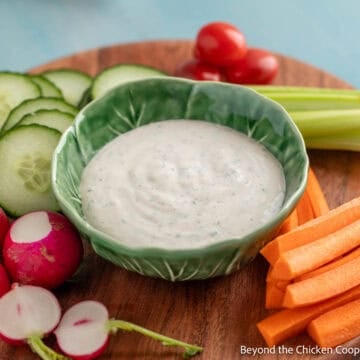
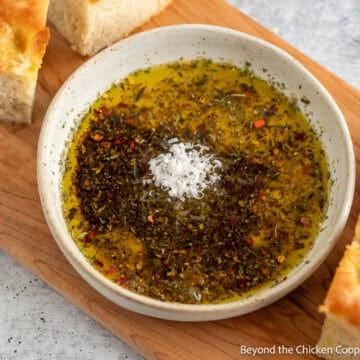
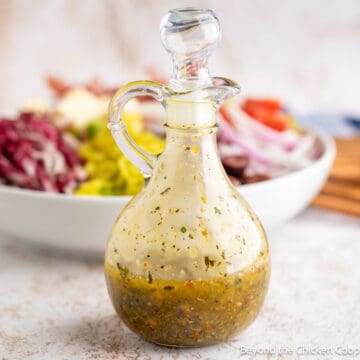
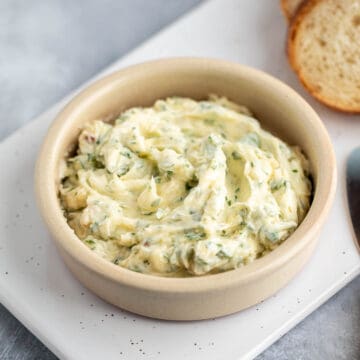
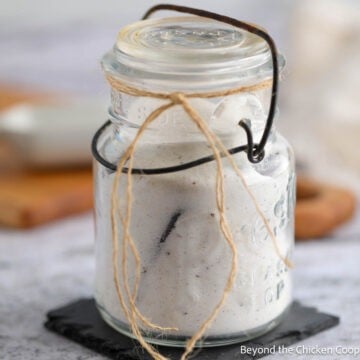
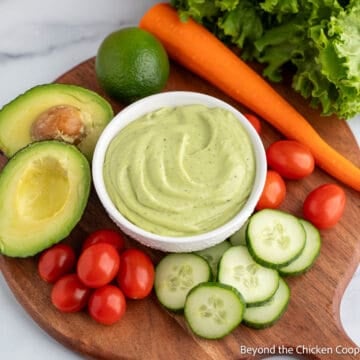

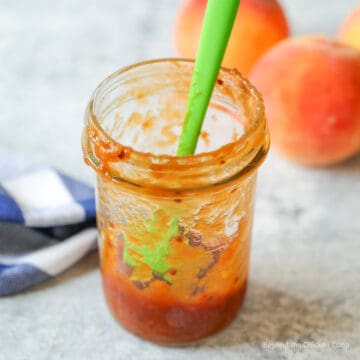
Leave a Reply